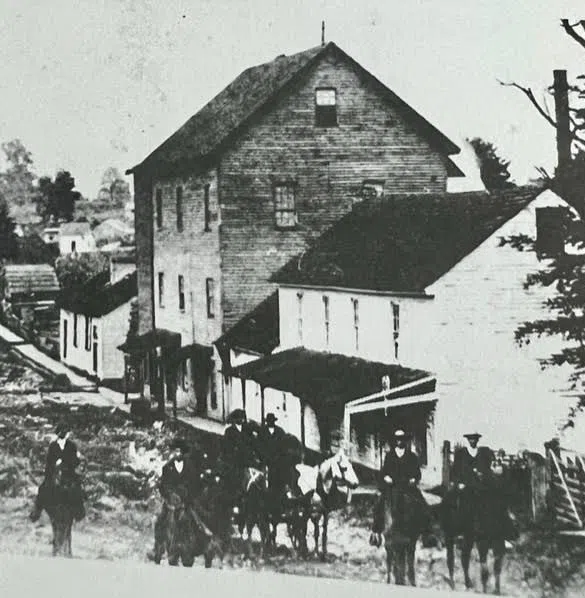BY JENNIFER MOONSONG / GLASGOW NEWS 1

Saltpeter Cave near Temple Hill was used for mining saltpeter for gunpowder in the War of 1812.
Southcentral Kentucky is known for its cave systems, and Barren and surrounding counties have many noteworthy caves, including the Saltpeter Cave, also known as the Giant’s Coffin.
The cave was used during the War of 1812 for mining saltpeter that was used in gunpowder. At that time, the cave belonged to Gen. Alexander Spotswood, great-nephew of George Washington. The manufacturing of gunpowder for the war was one of the county’s earliest forms of industry.
Other forms of industry in the days when the county was young included various grist mills and blacksmithing outfits.

Ritter’s Mill along Skaggs Creek was built in 1821 and was also a place for socializing.
It was in the mid-19th century that Barren County began to boom economically. In 1850, 92 residents claimed blacksmithing as their occupation. Cabinetmakers, shoemakers, mill workers and tanners were among other popular job titles. There were 17 tailors and 24 saddlers.
As always, waterways were connected to industry, and Skaggs Creek and Boyd’s Creek were epicenters of prosperity in the 1800s. In 1865, the first oil well was sunk on Boyd’s Creek. Many wells were also drilled along Skaggs Creek, and by 1900, Barren County was listed as fourth in the nation for oil production. According to late historian Franklin Gorin in his written accounts of the county, 270,000 gallons a month on average were produced and were transported out of state by the rail system in Glasgow. In his records, Gorin noted that, by 1976, there were only three saddle shops and two tailors.

Mr. Mann works in his cobbler’s shop on the west side of the Glasgow Public Square in 1865. This photo, which was exhibited in the World Photographers’ Exhibition in Paris, France, was included in Cecil Goode’s extensive collection of photos recording the community’s history.
From 1900 to 1920, industry, including agriculture, in the county declined. In part, this was a reflection of changing times. The population increase ceased, and many left to find employment elsewhere. Farms became smaller, and living conditions were not ideal. Community leaders saw these problems and addressed them. By 1960, roads were improved, the federal rural electrification program and telephone services helped the county move forward, and public waterlines were extended into some of the more rural portions of the county, leading to another boom in commerce and development.

Comments